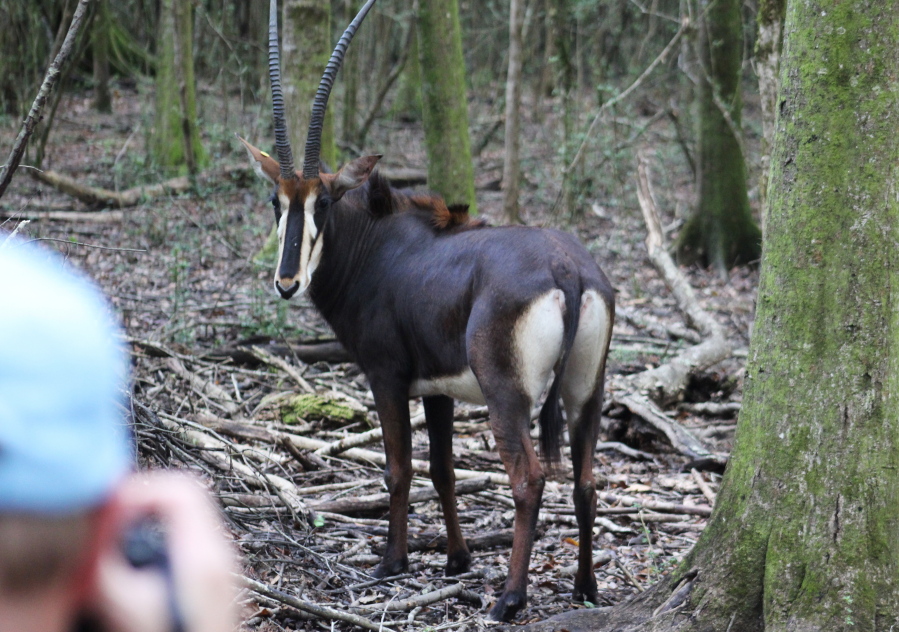NEW ORLEANS — A few tiny herds of African antelope have a new home on ranges in New Orleans, and zookeepers hope they will take advantage of the extra space away from curious crowds of humans to relax and reproduce.
The Alliance for Sustainable Wildlife breeding center has developed 88 acres of its 1,000-acre parcel of land, on the other side of the Mississippi River from the much smaller Audubon Zoo, where about 2,000 animals are on display.
In addition to 22 antelope — eight elands, six sable antelope, six Eastern bongos and two yellow-backed duiker (pronounced DIKE-er) — the area also will serve as home for seven giraffes and two okapi, a close relation to the giraffe that stands out from the rest because of its black-and-white-striped legs. Most of the animals have been moved here from the San Diego Zoo and its safari park.
“We’re letting them be animals, letting them do their thing,” said Michelle Hatwood, curator for the center, jointly established by the Audubon Nature Institute, an umbrella organization that includes the Audubon Zoo, and the San Diego Zoo Global Wildlife Conservancy.
The land, which is owned by The Audubon Institute and the Coast Guard, was used for 20 years by an Audubon project that focused on cloning and artificial insemination of endangered animals. The San Diego Zoo covered the $5.2 million cost for new site work, including the paddocks with solar-powered double gates, zoo spokesman Frank Donze said. The two zoos are sharing a little more than $1 million a year in operating costs, Hatwood said.
In the new facility, six Eastern bongo, nearly chest-high to Hatwood, and a pair of yellow-backed duiker about half their size share 3 acres.
The bongo are from what Hatwood described as a critically endangered subspecies with fewer than 100 in the wild, though North American zoos hold about 550.
“Bongo are water-loving forest antelope, so this is their dream,” Hatwood said Sept. 26, as she and zoo curator Joel Hamilton took journalists on a preview tour through the paddocks on a low flatbed trailer with hay bale seats.
The duiker were delighted with their new environment, she said: “They immediately started to breed. They were excited by all the space.”
The bongo and duiker will move into a 12-acre enclosure when its current occupants — eight eland and six sable antelope — move into a 45-acre enclosure with the seven giraffes, including two who arrived pregnant.
“The exciting thing about the whole project is that in these large spaces, we’re really able to increase the population sizes so they’re much more sustainable for the future,” Robert “Bob” Wiese, chief life sciences officer at San Diego Global, said in a phone interview.
While most of the animals have explored all their new territory, the giraffe — sentinels of the savannah and browsers along the forest’s edge — are cautious beasts and have stayed at the perimeter near their barn, Hatwood said. .
The breeding facility’s dual aim is to provide stock for zoos, which no longer collect hoofed stock from the wild, and to inspire other zoos to form similar collaborations, both curators said.



